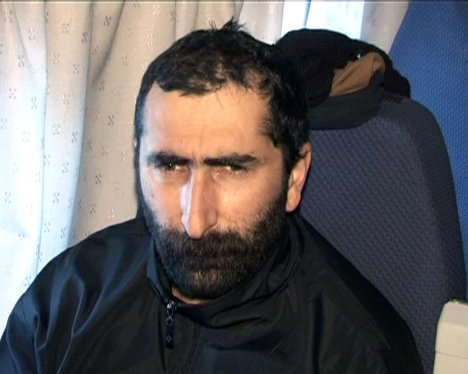
Violence in Ingushetia Continues Upswing
Publication: Eurasia Daily Monitor Volume: 9 Issue: 229
By:

Early December saw multiple victims of the armed confrontation in the North Caucasus, as had the previous weeks of this year. According to independent sources, eight people were killed, one injured and four kidnapped in the region during the week of December 3–9 (www.kavkaz-uzel.ru/articles/216978/).
On December 10, two people were killed by law enforcement personnel in the village of Dolakovo, which is in Ingushetia’s Nazran district. According to the press service of the Federal Security Service (FSB) branch in Ingushetia, a coordinator of the illegal Riyadus-Salikhin organization, Suleiman Shankhoev, was identified among those killed (www.1tv.ru/news/crime/221753). Reports from the site of the special operation contained the kind of information that is routinely distributed by the FSB in the region. According to the FSB, the suspected rebels were blockaded in a private home in Dolakovo and given the chance to surrender, but they opened fire and then were killed by return fire. Police found automatic weapons, ammunition and improvised explosive devices (IEDs) at the site where the rebels were killed. Initially, the FSB announced that two people were killed in the operation—Suleiman Shankhoev and his accomplice, 22-year-old Khasan Nalgiev (a.k.a. Abudujann). By the evening, however, the Ingush FSB announced three insurgents were killed, having found another body, identified as that of 21-year-old Ibragim Torshkhoev (a.k.a. Khattab) (www.rg.ru/2012/12/10/reg-skfo/shanhoev-anons.html). All three were on the wanted list, according to the FSB, and officials claimed they were planning to carry out suicide terrorist attacks.
In order to increase the importance of the police operation, the slain suspects were declared to have been experienced militants, although in 99 out of 100 such cases those killed are unknown to anyone prior to their killing. Thirty-year-old Suleiman Shankhoev was declared to be the coordinator of the Riyadus-Salikhin battalion, which was set up by Shamil Basaev to carry out terrorist attacks on Russian targets (https://ria.ru/investigation/20121210/914208948.html). This group, whose name is translated as Gardens of the Righteous, was put on the United Nation’s list of terrorist organizations in 2003 (https://palm.newsru.com/world/05mar2003/3_chech.html).
The authorities said Shankhoev might have been the Riyadus-Salikhin coordinator in Ingushetia’s lowlands. But according to the FSB’s logic, there should also be a Riyadus-Salikhin coordinator in the mountainous part of Ingushetia. However, since the start of the second war in Chechnya, no rebel has been spotted in the mountainous part of Ingushetia. All the violence in Ingushetia takes place in the republic’s lowlands and in the border area between Chechnya’s Achkhoi-Martan district and Ingushetia’s Sunzha district. Rather than being mountainous, this area is best described as foothills. Thus, the government practically invented a non-existent position in the hierarchy of the insurgents. If the authorities are genuinely mistaken, then it becomes clear why the government cannot control the situation in this part of the country.
This was not the only incident in Ingushetia. Against the backdrop of the numerous reports about weapons caches, arrests and disappearances, the Russian prosecutor’s office submitted the criminal case of Ali Taziev (better known as the military emir of the Caucasus Emirate, Emir Magas) to court (www.kavkaz-uzel.ru/articles/216765/). Having become the insurgency’s military emir after the killing of Shamil Basaev on June 10, 2006 (www.vz.ru/politics/2006/7/10/40858.html), Emir Magas was the second most important person in the armed resistance of the North Caucasus after Doku Umarov. Magas’ criminal case runs 390 volumes, which took him almost an entire year to read.
The government officially announced Magas’ arrest on June 9, 2010 (www.kavkaz-uzel.ru/articles/169951/). Yet the Ingush diaspora in Moscow knew about his arrest and detention in Lefortovo prison at the beginning of 2010. So for nearly half a year, the authorities tried to conceal the fact that Magas had been arrested, probably in an attempt to extract as much information as possible from him about the other high-ranking leaders of the Caucasus Emirate and the highly effective insurgency network that he had established in Ingushetia. From the frequent statements made by the law enforcement officials that Emir Magas was “giving up” everybody (www.rosbalt.ru/main/2010/06/10/744216.html) and that he had “actively cooperate[d] with the investigation” (https://rapsinews.ru/incident_news/20101209/251188011.html) and so on, we can conclude that it is unlikely that he cut a deal with the investigators. Whatever Magas hypothetically may have given away, nothing less than a life sentence is looming ahead for him, so it made no sense for him to cut a deal with the investigators.
Emir Magas was not the only piece of good luck for the Russian security services in 2010. On March 4, 2010, one of the primary ideologues of the Caucasus Emirate, Said Buryatsky, was killed (www.newsru.com/russia/04mar2010/said.html). By the end of March 2010, almost all leaders of Kabardino-Balkaria’s Yarmuk jamaat had been killed, including its head, Anzor Astemirov, who was also the third person in the hierarchy of the North Caucasian armed resistance and Caucasus Emirate’s qadi (www.youtube.com/watch?v=vmpwaj33suw). In July 2010, Ibragim Gajidadaev (a.k.a. Emir Ibrahim Gimrinsky) was killed in Dagestan. This string of successes by the Russian security services during the first half of 2010 seems to indicate the likelihood that the Russian intelligence services managed to plant a mole inside the resistance.
In any case, the trial of Emir Magas is unlikely to yield any unexpected news. Even if it does, two years after Magas was detained, it will likely be of no significance. Magas is the only case during the military campaigns in the North Caucasus in which the Russians managed to capture one of the highest-ranking commanders alive.
Thus, 2012 is coming to a close in Ingushetia in much the same way as the previous years of the armed conflict. Worst of all, there is practically no reason to believe the situation will improve and the government will manage to impose law and order in the next year. The Russian authorities do not know who they are fighting in the North Caucasus and how to combat a regional insurgency that seems to be capable of surviving setbacks to its leadership, such as what has occurred in Ingushetia where the militants are mounting a comeback. This means that next year will again feature victims of the armed conflict in Ingushetia and across the North Caucasus.




